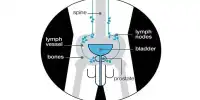For some, the thought of giving up their favorite sweet treats forever is the scariest part of embarking on a new, healthier way of eating. Don’t give up if you’re a cookie and candy addict. Sweets can be a part of a healthy, long-term eating pattern. However, for the least amount of harm and, don’t forget, the most enjoyment, they should be consumed in moderation. That is, in small doses or only a couple of times per week. Even a woman who has made a career out of eating candy admits to limiting her intake to one day per week.
Aside from an expanding waistline, do you need another reason to cut back on sugary foods and drinks? According to a new study, they are harming the environment by increasing cropland, water scarcity, and ecological footprint.
Do you want to help the environment? Reduce your intake of sweets, pastries, fried foods, and processed meat. According to a new study published this month, eliminating these foods from our diet is not only better for our health but also for the environment. Households in Australia and New Zealand consume more discretionary and junk foods than recommended by dietary guidelines, contributing to food-related GHGe and other environmental impacts.
Discretionary foods require more cropland, have less water, and have a larger ecological footprint. Meat emits greenhouse gases as well, though its water footprint is lower when compared to dairy products, cereals, grains, fruit and vegetables, and so on.
Sara Forbes.
Sara Forbes, a dietitian at the University of South Australia (UniSA), who led a review of 20 studies on the environmental impacts of food consumption in both countries, says the findings highlight the need for more sustainable dietary choices.
According to a 2020 Federal Government report, Australia emitted an estimated 510 metric tonnes of CO2, with food-related emissions accounting for 14.2 percent of this total. According to the report, the average Australian produces the equivalent of 19.7kg of CO2 per day through their diet.
Another 2017 report found that food waste accounts for approximately 6% of Australia’s GHGe, taking into account the water, energy, and pesticides used in food production as well as packaging that ends up in landfill, where it releases even more methane as it decomposes. Unlike in New Zealand, current Australian Dietary Guidelines (ADG) do not take into account the environmental impacts of food and need to be updated, according to researchers.

The current ADG recommends daily servings of the following ‘core’ foods: fruits and vegetables, grains, lean meats, fish, eggs, nuts, seeds, legumes, milk, cheese, yoghurt, and alternatives. These staple foods are estimated to contribute between 67 and 73% of total food-related GHGe in Australia, with meat, grains, and dairy emitting the most. Fruit and vegetables are two of the least significant contributors.
Sugar-sweetened beverages, alcohol, confectionary, and processed meats are examples of non-core or ‘discretionary’ foods, accounting for between 27 and 33 percent of food-related GHGe. While the percentage is lower than core food emissions, the fact that Australians consume a lot of avoidable energy-rich, nutrient-poor foods isn’t helping the environment.
Meat, seafood, and eggs account for 35% of greenhouse gas emissions in New Zealand, followed by highly processed foods such as pastries and ice cream (34 per cent). Other research looked into the environmental effects of water use in food production. Irrigators in Australia use eight million megalitres of water per year to grow crops, but the vast majority is exported, making it difficult to accurately reflect the country’s water footprint.
In their study, the researchers looked at 20 articles published in the last decade, each with a different set of findings. Despite the differences, distinct patterns emerged. “Discretionary foods require more cropland, have less water, and have a larger ecological footprint. Meat emits greenhouse gases as well, though its water footprint is lower when compared to dairy products, cereals, grains, fruit and vegetables, and so on” According to Forbes.
“It is past time that we better recognized the environmental impacts of the types and amounts of food we eat, both for the sake of the planet and our own health. The world’s population is expected to reach 10 billion by 2050. We cannot feed that many people unless we change the way we eat and produce food.”
Food production and consumption account for one-quarter of total global emissions. Agriculture takes up half of the world’s habitable land, resulting in a 60% loss of biodiversity. Furthermore, irrigation consumes an estimated two-thirds of the world’s freshwater.
















